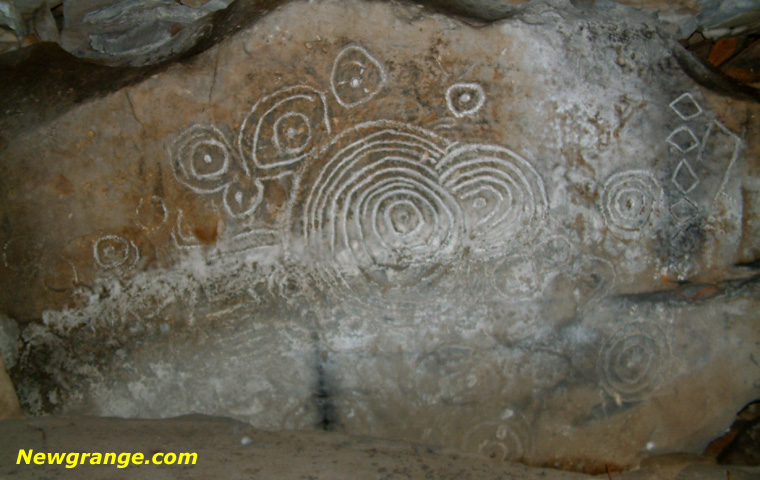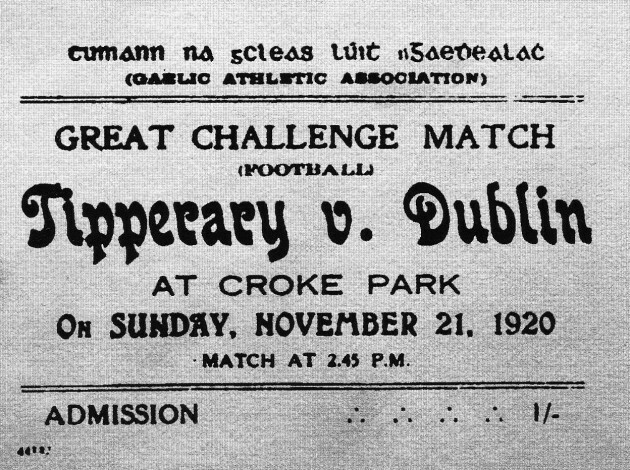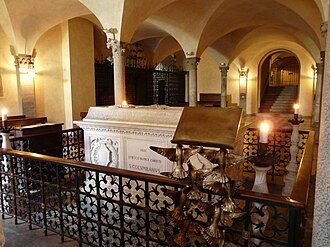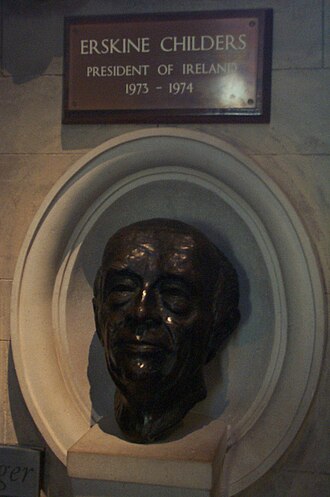21 November 615 AD: The death of St Columbanus at Bobbio in northern Italy on this day. Columbanus was the greatest of the Irish Apostles to preach the Faith on the Continent. He founded a string of monasteries that acted as bases from which his disciples spread the Word amongst the new Germanic kingdoms that emerged in the wake of the collapse of Roman power. Columbanus (the Latinised form of Columbán, meaning ‘the white dove’) was born in Ireland in 543, Prior to his birth, his mother was said to have had visions of bearing a child who, in the judgement of those interpreting the visions, would become a "remarkable genius". Columbanus was well-educated in the areas of grammar, rhetoric, geometry, and the Holy Scriptures.
Columbanus left home to study under Sinell, Abbot of Cluaninis in Lough Erne. Under Sinell's instruction, Columbanus composed a commentary on the Psalms. He then moved to Bangor Abbey on the coast of north east Ireland, where Saint Comgall was serving as the abbot. He stayed at Bangor until his fortieth year, when he received Comgall's permission to travel to the continent.
So after many years there as a leading member of the community he felt the call to go abroad and spread the Gospel amongst the Heathens. With some reluctance he was allowed to depart by his mentor and took twelve followers with him. Proceeding through Scotland and England they made their way to eastern France to the Court of the King of Burgundy. Here Columbanus was well received and given the old castle of Annegray in the isolated Vosges Mountains upon which to found a Monastery. Here the abbot and his monks led the simplest of lives, their food oftentimes consisting of nothing but forest herbs, berries, and the bark of young trees. So great was the devotion to Columbanus and so great were the numbers who flocked to witness his Piety and Sanctity that soon another site was required to cope with the influx of followers and penitents. Thus a new site was established at Luxeuil just a few miles away and Columbanus ruled his religious domain from there. However his great success evoked jealousy amongst the Frankish bishops and they conspired against him.
Forced to flee he made his way down the Loire to catch a ship home to Ireland but a great storm swept the vessel back into the Bay. Columbanus then decided that he would make his way back across France to the Rhine Valley in order to reach the Suevi and Alamanni, to whom he wished to preach the Gospel. After a couple of years of mixed success in what is now Switzerland his small band of followers reached northern Italy and the Court of King Agilulf at Milan in the year 612 AD. The King although a follower of the heretical Arian viewpoint was favourably disposed to Columbanus and gave him a plot of land on the Bobbio river near Genoa in which to establish himself. Here the Saint passed the last years of his life.
Columbanus is best known in monastic circles for his set of ‘Rules’ which governed the way each monk within the community had to conduct themselves. The Rule of Saint Columbanus embodied the customs of Bangor and other Celtic monasteries. It consisted of ten chapters, on the subjects of obedience, silence, food, poverty, humility, chastity, choir offices, discretion, mortification, and perfection.
However Columbanus did not lead a perfect life. According to his biographer Jonas and other sources, he could be impetuous and even headstrong, for by nature he was eager, passionate, and dauntless. These qualities were both the source of his power and the cause of his mistakes. His virtues, however, were quite remarkable. Like many saints, he had a great love for God's creatures. Stories claim that as he walked in the woods, it was not uncommon for birds to land on his shoulders to be caressed, or for squirrels to run down from the trees and nestle in the folds of his cowl. Although a strong defender of his Celtic traditions, he never wavered in showing deep respect for the Holy See as the supreme authority.
It possible that Columbanus had travelled to Rome at some stage in his life to meet Pope Gregory to discuss various matters but he also communicated with his successor Pope Boniface on the Paschal question over when exactly Easter should be celebrated. The Celtic Church still followed the old ways of observance and Columbanus was eager to ensure that he did the right thing. He wrote to the Pontiff Theodore I that:
We Irish though dwelling at the far ends of the earth, are all disciples of St. Peter and St. Paul. . . Neither heretic, nor Jew, nor schismatic has ever been among us; but the Catholic Faith. Just as it was first delivered to us by yourselves, the successors of the Apostles, is held by us unchanged . . . we are bound to the Chair of Peter, and although Rome is great and renowned, through that Chair alone is she looked on as great and illustrious among us…
By this stage Columbanus was over 70 years old and his end was approaching. He prepared for death by retiring to his cave on the mountainside overlooking the Trebbia River and when he died his remains were interred in the Abbey Church in Bobbio. His final resting place became a site of pilgrimage and was famed throughout Western Europe as the site where one of the Christianity’s greatest advocates lay buried. It still exists today. [above]










